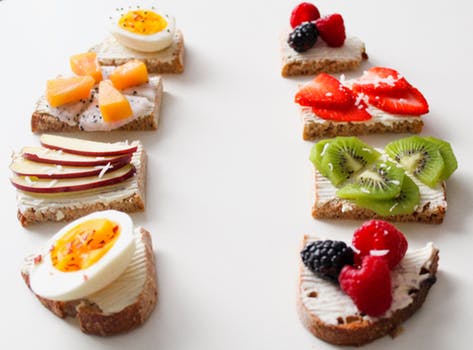Nutritional Goal Setting
Be S.M.A.R.T
With Be Inspired Nutrition by Theresa Gray
The Be S.M.A.R.T goal
setting tool is an excellent way to look at nutritional goals.
The acronym S.M.A.R.T stands for
Specific, Measurable, Achievable, Realistic and Timely and supports the goal setting process.
Have you have ever made the decision to eat more healthily in order to improve your health and well-being but didn’t actually set a plan in place to follow?
How long did you last?
And how quickly did you abort mission?
Committing to too many new things at once and going cold turkey on your old habits, even with all the right intentions can set you up to feel frustrated, discouraged, bored and then eventually give up. For example, signing up at the gym, starting a new fitness program and changing all your food habits in one week. This is because you have no clear starting point, no evaluation point to keep you accountable and no way to find out if you are succeeding.
However to “Aim High” and succeed at your goals is to start setting specific and attainable goals.
So how do we do this?
By following the SMART steps below is to help lead you to a path of success.
Specific: Goals need to be specific and or detailed. When striving for specific nutritional goals consider the what, when, where and why of the goal being set. By zooming in on the specifics of the goal, makes the goal more achievable and likely to promote a more positive result. For example, you have sugar cravings every day and at morning tea most days you enjoy a sweet biscuit with your coffee. But you want to break this habit. So you try really hard and skip the biscuit today but when tomorrow comes you also decide that it is all too hard and have the biscuit anyway.
In contrast, try making smaller and more specific goals. “This week I will no longer eat a biscuit with my coffee but will substitute my biscuit with a handful of nuts”. Or another example could be “I will only eat a biscuit with my coffee on a Wednesday and Friday at morning tea and on the other days substitute the biscuit with a handful of nuts.”
Measurable: Having a measurable goal is having a way to know you have accomplished that goal. For instance, this helps keep your desire up driving you forward towards eating more healthily. In addition, keeping a food diary is a great way to track this. It doesn’t need to be fancy or descriptive, even just a tick on your calendar that indicates that you ate nuts on those particular days, is a measure that will you find rewarding.
Achievable: By placing yourself in a position to achieve this goal, you must also consider you have all the tools in reaching your goal. For example, by replacing your biscuit with nuts, you have to be organised and to be sure you bring your nuts in a small container in your bag or keep a container of nuts in your desk drawer.
So by making sure you have the tools, information and or resources you need to reach your goal you are much more inclined to stick to the goal and determined to follow through with the plan.
Realistic: As much as you want that end result to be here already, it can be hard to contain the competitive desire to set big goals. It’s part of who we are and what keeps us aggressive and strong. But even by setting a huge goal you still need little goals along the way. And one way to remember this is, it's not going to happen overnight. So the bar needs to be set high enough that it’s realistically achievable. For example, If you are aiming to lose 20 kilo’s it may feel overwhelming, but by having a small goal of 5 kilo's is a goal easier to aim for and something challenging but not impossible.
Another example might be, you may want to cut sugar from your diet. So by reducing half a teaspoon of sugar from your tea is something achievable. This is because you are not eliminating all the sugar from your beverage but only half the sugar and this may not even taste so different.
However, if you find all this too easy you can always adjust the goal again and make it a full teaspoon. Then this becomes a long-term behaviour change which you are more likely to stick too altogether.
Timely: “I’m having a bad day today so I’ll just start again tomorrow.” Have you ever started a goal and then re-started it again?
Goals must have a time frame and a deadline in which to be completed. As leaving the time frame open-ended can also lead to a decline in progression.
So, if you have a calendar or a weekly diary, marking such dates in them whether short-term or long-term can support and guide you through your nutritional goals.
Therefore the being S.M.A.R.T. and setting goal tool is a fantastic way for keeping you focused and on task in reaching your true potential. And by evaluating your goals and re-adjusting them is a great way to improve and maintain your health and well being.
How will you make your goals S.M.A.R.T?
Name: _____________________________.
Date: ______________________________
My Nutritional Goal:
______________________________________________________________________________________________________________________________________________________________
S = Specific:
______________________________________________________________________________________________________________________________________________________________
M = Measurable
______________________________________________________________________________________________________________________________________________________________
A = Achievable
______________________________________________________________________________________________________________________________________________________________
R = Realistic
______________________________________________________________________________________________________________________________________________________________
T = Timely
______________________________________________________________________________________________________________________________________________________________
Sign: Print Name:
_______________________________________________________________________________










